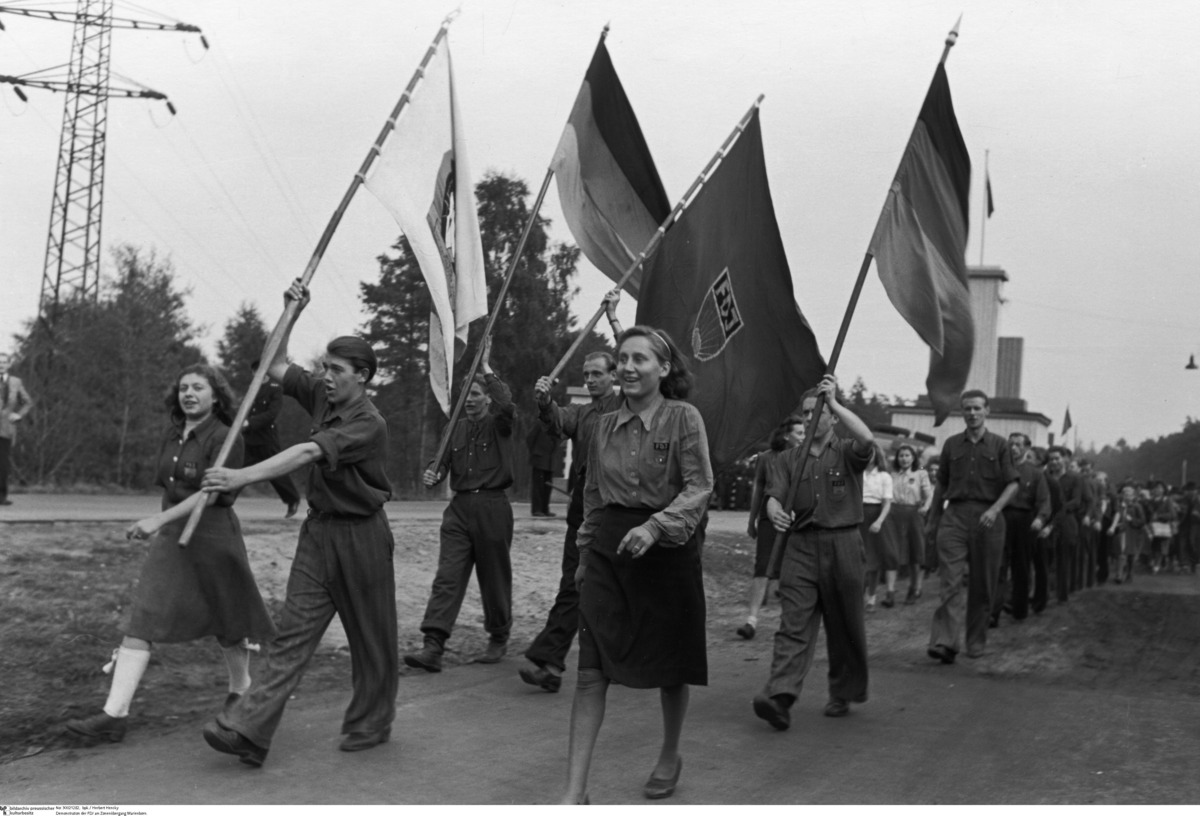Source

Source: Photo: Herbert Hensky.
bpk-Bildagentur, image number
30021282. For rights inquiries, please contact Art Resource at
requests@artres.com (North America) or bpk-Bildagentur at
kontakt@bpk-bildagentur.de (for all other countries).
On March 7, 1946, the various anti-fascist youth committees in the Soviet occupation zone merged to form a single organization for all young people, the Free German Youth [Freie Deutsche Jugend or FDJ]. Although the FDJ was (formally) a non-partisan organization, the Communists took control at an early stage. In terms of rhetoric, the FDJ embraced German unity and championed fundamental democratic rights as well as opportunities for young people to participate in political and social life. The FDJ soon became a mass organization that was represented in the People’s Parliament [Volkskammer] and that prepared young people for service to the state. The best-staffed and best-funded unit in the FDJ’s Central Council was the Department for Western Affairs, which was directed by Heinz Lippmann, a council member. Its job was to coordinate the activities of FDJ members in West Germany, whose numbers ranged as high as 13,000. In addition to carrying out propaganda campaigns, the members of the FDJ in the West engaged in frequent violent demonstrations and conflicts with West German police. The FDJ was banned in the Federal Republic of Germany on June 26, 1951.

Source: Photo: Herbert Hensky.
bpk-Bildagentur, image number
30021282. For rights inquiries, please contact Art Resource at
requests@artres.com (North America) or bpk-Bildagentur at
kontakt@bpk-bildagentur.de (for all other countries).
© bpk / Herbert Hensky